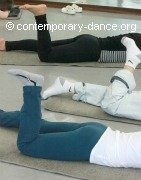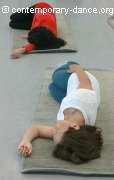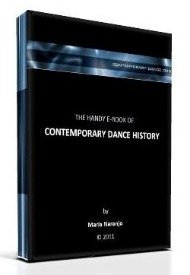THE FELDENKRAIS METHOD
“Did you know that you don’t know what you know?”
The Feldenkrais method is a system of ideas and physical exercises that aim to increase awareness through movement*. It provides an educational approach that is based on the study of human movement that promotes general wellbeing.
Although at a first glance the method’s approach seems to manipulate the body from an anatomical perspective, it actually seeks to widen the possibilities of a basic concept: the SELF IMAGE.
The self image is an explanatory principle, with no objective reality, but exists as a phenomenon within the configuration of all human beings. It underlies and affects everything we do and is built throughout our lives, growing up and results from all of our learning experiences. While the self image is always developing, as it forms, it is also unconsciously narrowing the perception of ourselves and who we are. The Feldenkrais Method** searches to broaden our self image, relying on our human capability for continuous learning and lifelong plasticity.
There are four basic aspects that make up the self image:
THINKING – FEELING – SENSING – MOVING

These four basic aspects are understood as interconnected experiences, which may be affected reciprocally. Here, movement is the choice to intervene around our self image due to its immediacy and participation at everything we do.
An important rule for the execution of any movement at a Feldenkrais session is that it has to be pleasant. There are actually no ‘correct’ or ‘wrong’ moves, but rather functional*** movements that may serve both varied and specific goals.
In that sense, rather than searching to fix anything on somebody (like an injury or low self esteem), the Feldenkrais method explores the individual’s wishes or goals and tries to provide more choices to be able to fulfill one’s intentions with movement.
There are two main ways in which the method is practiced:
1. Awareness Through Movement
 Awareness Through Movement class. Feldenkrais trainer: Alan Questel. Medellín, 2012. photo © contemporary-dance.org
Awareness Through Movement class. Feldenkrais trainer: Alan Questel. Medellín, 2012. photo © contemporary-dance.org2. Functional integration
 Functional Integration session. Feldenkrais trainer: Alan Questel. Medellín, 2012. photo © contemporary-dance.org
Functional Integration session. Feldenkrais trainer: Alan Questel. Medellín, 2012. photo © contemporary-dance.orgAwareness Through Movement classes consist of group sessions that are verbally guided. Learners are usually comfortably lying or sitting and teachers draw from a wide range of lessons, of various structures, that can be applied to different ideas, both in movement as well as in something like self image.
A Functional Integration session is a one-to-one experience in which a practitioner establishes a conversation with a learner, primarily through touch and gentle movements. The student or client is comfortably dressed, normally lying or sitting.
In general, movements from both Awareness through Movement andFunctional Integration are small and slow. They can be imagined or actually executed and have a wide range of action, from simple and easy, to higher levels of complexity.
According to the principles of the Feldenkrais method, there’s no intention of repairing people’s movement. The system is oriented towards the reconstruction of muscular habits, in search for a more ‘skeletal’ and less ‘muscular’ way of moving. Imagining and sensing movement in ways that create a more efficient use of the self and relieving motor difficulties, with great influence on the neurological system.

The philosophical grounding of this method intends to bring about a distribution of movement through our whole self, in different ways, and can be viewed as a whole life process. By practicing the Feldenkrais method, the student is actually encouraged ‘to learn to learn’, in order to continue applying this kind of knowledge towards developing a progressively growing inner authority.
Such a revolutionary approach has been used by contemporary dance teachers, dancers and choreographers as a complementary subject of study. It is known as one of the techniques from the somatic paradigm and it may provide dancers with tools for technical enhancement, health issues, creativity and many related needs of the profession.
For more information, you can visit the website of The Feldenkrais Guild of North America or Feldenkrais Trainer Alan Questel’s websites:
uncommonsensing.com and pregnantpauses.us.
They all provide many interesting readings and are full of related news.
* ‘Awareness’ is understood as a result of observing ourselves and it is differentiated from the notion of ‘Self Consciousness’, which includes judgment of what we observe.
** Dr. Moshe Feldenkrais (1904–1984), was a Russian born physicist who searched for a solution for the pain in his knees. Feldenkrais studied himself and applied his knowledge of physics, as well as other subjects, to the human structure.
*** If a Feldenkrais method teacher is asked if a movement is correct or not, they would likely respond with the question, “Correct for what?”

Contemporary-dance.org wishes to express gratitude to Feldenkrais Trainer Alan Questel, who generously helped and answered to questions during the writing of this article.
Return from the Feldenkrais Method to Contemporary Dance Techniques
Return to Contemporary Dance Home Page
The handy e-book of CONTEMPORARY DANCE HISTORY:
The Dance Thinker is our occasional E-zine. Fill in the form below to receive it for free and join us.
Read:
"The Dance Thinker"
BACK ISSUES
Post contemporary dance announcements (workshops, auditions, performances, meetings and important news... it is free.)



